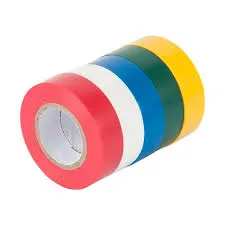Types of Intumescent Strips An Overview
Intumescent strips are essential components in fire protection systems, designed to enhance the safety of buildings during a fire. When exposed to heat, these strips expand significantly, forming a barrier that seals gaps around doors and windows, preventing the passage of smoke and flames. Different types of intumescent strips are available, each with its unique properties and applications.
1. Material Composition
Intumescent strips are primarily made from a variety of materials, including rubber, plastic, and specially formulated intumescent materials. The choice of material affects the strip's performance characteristics, including thermal expansion, durability, and resistance to environmental factors. For example, some strips are made from a thermoplastic material that softens and expands when heated, while others rely on a flexible rubber matrix infused with intumescent agents.
2. Functionality and Operation
The primary function of intumescent strips is to provide a fire-resisting seal. When temperatures rise due to a fire, the strips undergo a chemical reaction that causes them to expand. This expansion can seal gaps up to several centimeters, effectively blocking the ingress of flames and smoke. Intumescent strips are often used in conjunction with other fire safety measures such as fire doors, which are designed to limit the spread of fire within a building.
3. Types of Intumescent Strips
There are several types of intumescent strips based on their application and construction
- Solid Intumescent Strips These are solid strips designed for easy installation in door frames. They are fixed using adhesive tapes or screws and expand uniformly when subjected to heat.
types of intumescent strips

- Folded or Rolled Strips These strips come in a folded design, which allows for easy installation in tight spaces. They unfold and expand when exposed to fire, ideal for applications where conventional strips may not fit.
- Combination Strips These strips combine intumescent materials with other fire-resistant materials, such as soundproofing elements. They serve dual purposes, providing both fire resistance and acoustic insulation, making them suitable for use in office buildings and shared spaces.
4. Applications
Intumescent strips are used in various applications across residential, commercial, and industrial buildings. They are commonly employed in external and internal doors, window frames, and elevator shafts. By integrating these strips into building designs, architects and engineers ensure compliance with fire safety regulations while enhancing overall safety and security.
5. Regulations and Standards
The effectiveness of intumescent strips is governed by various fire safety regulations and standards, which vary by region. Certification and testing ensure that the strips can withstand specific temperatures and provide adequate protection within designated time frames. Understanding these standards is crucial for manufacturers, builders, and architects to ensure that the products used meet legal fire safety requirements.
Conclusion
In conclusion, intumescent strips play a vital role in modern fire safety management. Their ability to expand and create a solid barrier against flames and smoke is crucial in minimizing fire damage and enhancing the safety of occupants. With various types and applications available, choosing the right intumescent strip is essential for maximizing fire protection in any building. As technology advances, we can expect innovations in the materials and designs of these vital safety components, further improving their performance in the face of fire hazards.
-
XIANGFAN Rubber Tape-Ultimate Solutions for All Your Insulation NeedsNewsJun.24,2025
-
XIANGFAN Rubber Tape-Protection for Industrial and Residential ApplicationsNewsJun.24,2025
-
XIANGFAN Rubber Tape: Superior Safety and Sealing for Demanding EnvironmentsNewsJun.24,2025
-
XIANGFAN Rubber Tape: Reliable Solutions for Every Electrical ChallengeNewsJun.24,2025
-
XIANGFAN Electrical & Industrial Tape: Powering Reliability Across IndustriesNewsJun.24,2025
-
XIANGFAN Electrical & Industrial Tape: Excellence in Every ApplicationNewsJun.24,2025
